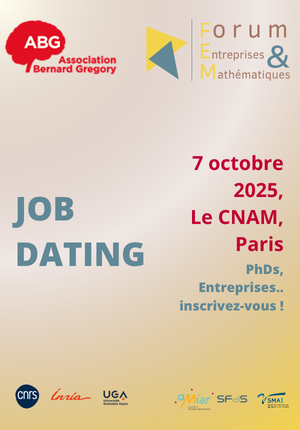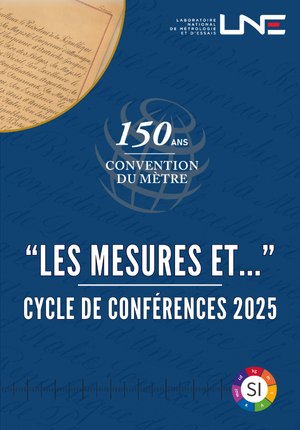DÉVELOPPEMENT DE COMPOSÉS THÉRANOSTIQUES ACTIVABLES PAR RAYONNEMENTSIONISANTS // DEVELOPMENT OF THERANOSTIC COMPOUNDS ACTUATABLE BY IONIZING RADIATIONS
|
ABG-132906
ADUM-66951 |
Sujet de Thèse | |
| 16/07/2025 |
Université Paris-Saclay GS Chimie
Orsay - Ile-de-France - France
DÉVELOPPEMENT DE COMPOSÉS THÉRANOSTIQUES ACTIVABLES PAR RAYONNEMENTSIONISANTS // DEVELOPMENT OF THERANOSTIC COMPOUNDS ACTUATABLE BY IONIZING RADIATIONS
prodrogue, anticancer, radiothérapie, photoswitch, chimie médicinale, IRM
prodrug, anticancer, radiotherapy, photoswitch, medicinal chemistry, MRI
prodrug, anticancer, radiotherapy, photoswitch, medicinal chemistry, MRI
Description du sujet
De nombreux efforts ont été menés au cours des 20 dernières années pour contrôler l'activation d'un traitement dans le temps e tl'espace in vivo. Les prodrogues théranostiques activables par stimulus externe constituent un des outils les plus prometteurs dans ce domaine. Plus particulièrement, les prodrogues et nano-objets photosensibles ont des atouts intéressants pour le déclenchement d'actions in vivo non invasives et contrôlées spatio-temporellement. Cependant, jusqu'à aujourd'hui, la plupart des systèmes photoactivables requiert l'emploi de photons de l'UV au proche infra-rouge. Ceci limite l'activation in vivo à quelques millimètres sous l'épiderme, ce qui restreint énormément toute application clinique, principalement à l'ophtalmologie ou au traitement épidermique.Aujourd'hui, il n'existe aucune solution clinique non invasive pour l'emploi d'outil photoactivable en tissus profonds.
Le projet s'insère dans le développement d'outils capables de fournir un traitement en tissu profond avec une résolution spatio-temporelle contrôlée. Des prodrogues théranostiques, détectables par imagerie de résonance magnétique nucléaire (IRM) et activables par des rayons cliniques de radiothérapie, seront développées. Ce projet, basé sur des techniques d'activation reposant sur l'utilisation des infrastructures déjà en place dans la plupart des hôpitaux, s'inscrit dans une optique de développement de systèmes moléculaires pour des applications en clinique. Les verrous chimiques (synthèse des prodrogues), physicochimiques (activation moléculaire,interaction avec environnements biologiques) et biologiques (mécanisme de mort cellulaire, effet thérapeutique) seront étudiés. Des techniques de modélisation moléculaire (DFT) et des outils d'intelligence artificielle seront également utilisés pour la prédiction de propriétés moléculaires et physicochimiques.
------------------------------------------------------------------------------------------------------------------------------------------------------------------------
------------------------------------------------------------------------------------------------------------------------------------------------------------------------
The possibility to control the activation of treatment in space and time in vivo has garnered significant attention and efforts over the past 20 years. Externally triggered theranostic prodrugs are one of the most promising tools in this field. In particular, photosensitive prodrugs and nano-objects showed great promise for spatio-temporally controlled and non-invasive activations in vivo. However, most of the currently described photosensitive systems can only be activated by UV to near-infrared lights. This limits in vivo activation to few millimetres below the skin, which hugely restrains clinical applications, mainly to ophthalmology or skin treatment. To date, there is no non-invasive clinical approach for using light-sensitive materials in deep tissues.
The project takes part in the development of tools able to provide treatment in deep tissues in a space- and time-controlled resolution.Theranostic prodrugs detectable by nuclear magnetic resonance imaging (MRI) and able to be activated by radiotherapy clinical beams, will be developed. This project aligns with the perspective of future advancements in molecular systems for clinical applications by relying on activation techniques utilizing already-available clinical infrastructures. The chemical (prodrug synthesis), physicochemical (molecular activation, interaction with biological environment) and biological (cell-death mechanism, therapeutic effect) locks will be investigated. Molecular modeling techniques (DFT) and artificial intelligence tools will also be used for the prediction of molecular and physicochemical properties.
------------------------------------------------------------------------------------------------------------------------------------------------------------------------
------------------------------------------------------------------------------------------------------------------------------------------------------------------------
Début de la thèse : 01/10/2025
WEB : https://curie.fr/equipe/mahuteau
Le projet s'insère dans le développement d'outils capables de fournir un traitement en tissu profond avec une résolution spatio-temporelle contrôlée. Des prodrogues théranostiques, détectables par imagerie de résonance magnétique nucléaire (IRM) et activables par des rayons cliniques de radiothérapie, seront développées. Ce projet, basé sur des techniques d'activation reposant sur l'utilisation des infrastructures déjà en place dans la plupart des hôpitaux, s'inscrit dans une optique de développement de systèmes moléculaires pour des applications en clinique. Les verrous chimiques (synthèse des prodrogues), physicochimiques (activation moléculaire,interaction avec environnements biologiques) et biologiques (mécanisme de mort cellulaire, effet thérapeutique) seront étudiés. Des techniques de modélisation moléculaire (DFT) et des outils d'intelligence artificielle seront également utilisés pour la prédiction de propriétés moléculaires et physicochimiques.
------------------------------------------------------------------------------------------------------------------------------------------------------------------------
------------------------------------------------------------------------------------------------------------------------------------------------------------------------
The possibility to control the activation of treatment in space and time in vivo has garnered significant attention and efforts over the past 20 years. Externally triggered theranostic prodrugs are one of the most promising tools in this field. In particular, photosensitive prodrugs and nano-objects showed great promise for spatio-temporally controlled and non-invasive activations in vivo. However, most of the currently described photosensitive systems can only be activated by UV to near-infrared lights. This limits in vivo activation to few millimetres below the skin, which hugely restrains clinical applications, mainly to ophthalmology or skin treatment. To date, there is no non-invasive clinical approach for using light-sensitive materials in deep tissues.
The project takes part in the development of tools able to provide treatment in deep tissues in a space- and time-controlled resolution.Theranostic prodrugs detectable by nuclear magnetic resonance imaging (MRI) and able to be activated by radiotherapy clinical beams, will be developed. This project aligns with the perspective of future advancements in molecular systems for clinical applications by relying on activation techniques utilizing already-available clinical infrastructures. The chemical (prodrug synthesis), physicochemical (molecular activation, interaction with biological environment) and biological (cell-death mechanism, therapeutic effect) locks will be investigated. Molecular modeling techniques (DFT) and artificial intelligence tools will also be used for the prediction of molecular and physicochemical properties.
------------------------------------------------------------------------------------------------------------------------------------------------------------------------
------------------------------------------------------------------------------------------------------------------------------------------------------------------------
Début de la thèse : 01/10/2025
WEB : https://curie.fr/equipe/mahuteau
Nature du financement
Précisions sur le financement
PhD call Stand up for Science UPSaclay*
Présentation établissement et labo d'accueil
Université Paris-Saclay GS Chimie
Etablissement délivrant le doctorat
Université Paris-Saclay GS Chimie
Ecole doctorale
571 Sciences Chimiques : Molécules, Matériaux, Instrumentation et Biosystèmes
Profil du candidat
Titulaire d'un diplôme de Master en chimie. Vous êtes une personne motivée avec un désir de se confronter à des problèmes techniques et scientifiques pour des avancées potentiellement majeures dans les traitements médicaux, et avec un intérêt profond pour un travail multidisciplinaire. Des capacités de communication orale en anglais et/ou français et un fort esprit d'équipe sont indispensables.
Ce projet donnera l'opportunité de développer des compétences en chimie organique/inorganique, physique des radiations, biologie cellulaire et techniques de caractérisation associées, modélisation et intelligence artificielle. Etre motivé par un environnement de recherche de pointe, un contexte multi-collaborateurs, et par la participation potentielle aux futures phases de valorisation du projet(brevet, etc.) est requis.
Applicants should hold a master's degree in chemistry. We are seeking a motivated individual with a passion for tackling technical and scientific challenges to potentially make breakthrough innovations in medical treatments, and with a strong interest in multidisciplinary approaches. Proficiency in English and/or French oral communication and a great team spirit are essential. This project offers excellent opportunities to develop skills in organic/inorganic chemistry, radiation physics, cell biology and associated characterization techniques, modeling and artificial intelligence. Candidates are expected to be highly motivated to take advantages towork in a leading research environment, to benefit from a multi-collaboration context, and to potentially contribute in the valorisation phases (patent, etc.) of the project.
Applicants should hold a master's degree in chemistry. We are seeking a motivated individual with a passion for tackling technical and scientific challenges to potentially make breakthrough innovations in medical treatments, and with a strong interest in multidisciplinary approaches. Proficiency in English and/or French oral communication and a great team spirit are essential. This project offers excellent opportunities to develop skills in organic/inorganic chemistry, radiation physics, cell biology and associated characterization techniques, modeling and artificial intelligence. Candidates are expected to be highly motivated to take advantages towork in a leading research environment, to benefit from a multi-collaboration context, and to potentially contribute in the valorisation phases (patent, etc.) of the project.
07/09/2025
Postuler
Fermer
Vous avez déjà un compte ?
Nouvel utilisateur ?
Besoin d'informations sur l'ABG ?
Vous souhaitez recevoir nos infolettres ?
Découvrez nos adhérents
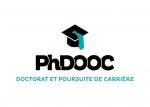 PhDOOC
PhDOOC  CESI
CESI  ONERA - The French Aerospace Lab
ONERA - The French Aerospace Lab  Ifremer
Ifremer  Généthon
Généthon  CASDEN
CASDEN  Tecknowmetrix
Tecknowmetrix  ASNR - Autorité de sûreté nucléaire et de radioprotection - Siège
ASNR - Autorité de sûreté nucléaire et de radioprotection - Siège  MabDesign
MabDesign  Aérocentre, Pôle d'excellence régional
Aérocentre, Pôle d'excellence régional  Groupe AFNOR - Association française de normalisation
Groupe AFNOR - Association française de normalisation 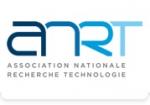 ANRT
ANRT 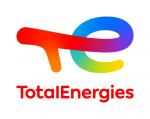 TotalEnergies
TotalEnergies  MabDesign
MabDesign  Institut Sup'biotech de Paris
Institut Sup'biotech de Paris  SUEZ
SUEZ  Laboratoire National de Métrologie et d'Essais - LNE
Laboratoire National de Métrologie et d'Essais - LNE  Nokia Bell Labs France
Nokia Bell Labs France 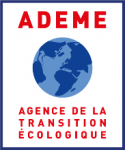 ADEME
ADEME

